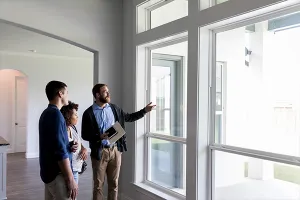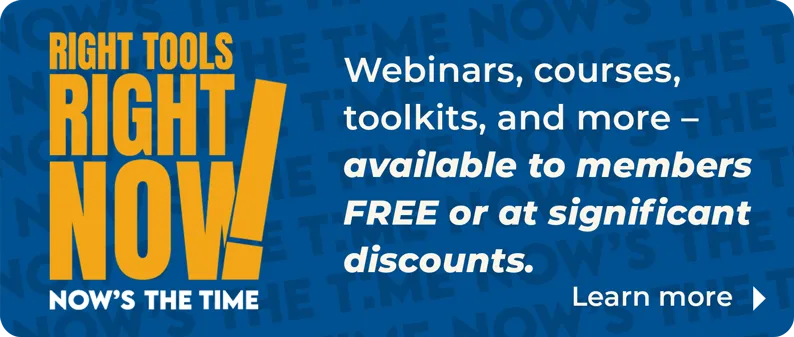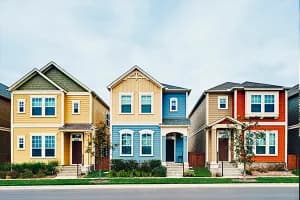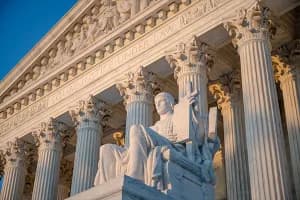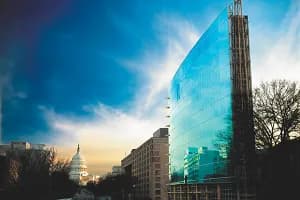

Cities and towns nationwide are facing an alarming increase in the number of people struck and killed while walking. Speaking at the REALTORS® Legislative Meetings in Washington, D.C., Heidi Simon, director of thriving communities at Smart Growth America, said fatality rates are reaching levels not seen in more than 30 years. Smart Growth America is a nonprofit organization that aligns with NAR’s advocacy efforts to support communities on their path to becoming healthy, prosperous and resilient.
Since 2010, pedestrian fatalities have increased by 75%, according to Smart Growth America’s 2024 report, “Dangerous by Design.” A lack of safe, walkable spaces not only damages the health of families and communities but also stagnates potential real estate growth.
“At Smart Growth America, we firmly believe that changes to the built environment—and how we design our streets—[will] have the greatest and the longest lasting impact for improving safety and accessibility. Essentially, what we want to do is support places that create neighborhoods where everyone can be the best versions of themselves,” Simon said. “And that includes housing.”
For residential and commercial real estate professionals, it’s essential to attend city planning meetings and become a vocal advocate for the long-term benefits of creating safer intersections, bike lanes and walkable neighborhoods. These infrastructure elements are shown to improve home values and desirability for homeowners and future buyers. According to NAR’s Community & Transportation Preferences Survey, 78% of people would pay more for a home in a walkable community.
Prevent Hazards with Specialized Lanes and Visual Cues
According to the recent Smart Growth America report, the South and Southeast show the highest rates of pedestrian fatalities, often due to car-centric infrastructure built after the widespread popularization of automobiles. Urban areas are experiencing a faster increase in pedestrian fatalities than rural areas.
Communities of color are disproportionately affected: The report’s data show that American Indian and Alaska Native populations are more likely to die while walking than people from any other race or ethnic group. These populations, plus Black Americans, account for nearly 22% of all pedestrian deaths in metro areas despite accounting for just under 13% of the population in 2022.
Simon, who manages the national Complete Streets Coalition, emphasized the need to address the issue of vehicle speed—the number one contributor to pedestrian deaths. She also noted that the increasing size of vehicles, such as SUVs and large trucks, is exacerbating the problem. A lack of protected crosswalks, disconnected sidewalks, and conflicting cues from the built environment contribute to unsafe conditions, she said.

More than 1,700 Complete Streets policies have been passed in the United States, including those adopted by 35 state governments, the Commonwealth of Puerto Rico, and the District of Columbia.
Changes that Minimize or Slow Car Travel
From a commercial development perspective, a top priority for smart growth advocates is “locating the things people need to be close to where they live,” Simon said, “so that not every trip has to be a car trip if you don’t want it to be. It can be a walking trip; it can be a biking trip. The goal is building a safe transportation system so that when you choose to walk, bike or take transit, you're not putting your life at risk.”
Another smart growth priority is giving people a say on what is built in their own neighborhood. “We need to rethink the decision-making process. Who's at the table and who are we designing for?” Simon said. While bike lanes sometimes stir initial complaints from drivers, convincing naysayers with powerful data and dramatic before-and-after photos can be effective.
Making transportation improvements like painting reflective lane lines and color-coded designations to separate cars from bike lanes and pedestrian zones can help reduce risks, but physical barriers are far more effective in preventing fatalities, she said. In terms of streetscapes, constructing visual distractions like additional trees, murals, benches, prominent traffic signals and wider sidewalks also can signal to drivers that they’re entering a commercial district, and that they should slow down and get off their phones.
Also, community developers can improve safety by lowering speed limits in highly populated areas. For example, according to the National Traffic Safety Board’s 2017 study on speeding-related crashes, a pedestrian will survive approximately 95% of the time if the speed limit is 20 miles per hour or less, and 55% if the speed limit is 30 miles per hour or less; but the crash survival rate is only 15% if the speed limit is above 40 miles per hour.

Become a Smart Growth Advocate
Community planners and zoning advocates, including members of NAR, can take proactive steps to improve safety through neighborhood investment, said the leadership of the National Association of REALTORS® Smart Growth Advisory Board, which hosted the session. The advisory board chair is Danette O’Neal, ABR, CIPS, of New Orleans, and the vice chair is Will Doerlich, ABR, CIPS, of Pleasanton, Calif.
“Individual members can take this information to their community, and it can have an important impact on that community,” Doerlich said, stressing the valuable role real estate professionals play in influencing local policymaking. “And just as we have an impact on one person or one family at a time getting into a house, we can have an impact on one community at a time as we work with our local officials [on smart growth initiatives].”
Through NAR’s Smart Growth Grants program, 60 grants totaling approximately $350,000 have been awarded to local REALTOR® associations this year for various projects, including Complete Streets initiatives, planning and zoning classes, walk audits, and community polling on growth and development.
In addition, NAR provides state and local associations the opportunity to apply for Placemaking Grants which focus on creating permanent public spaces such as trails, playgrounds, community gardens, Rural Outreach Grants which target initiatives in rural areas (populations 30,000 and below) addressing issues such as broadband, well and septic systems, and environmental standards, and Housing Opportunity Grants which support efforts to increase housing supply, affordability and accessibility.
